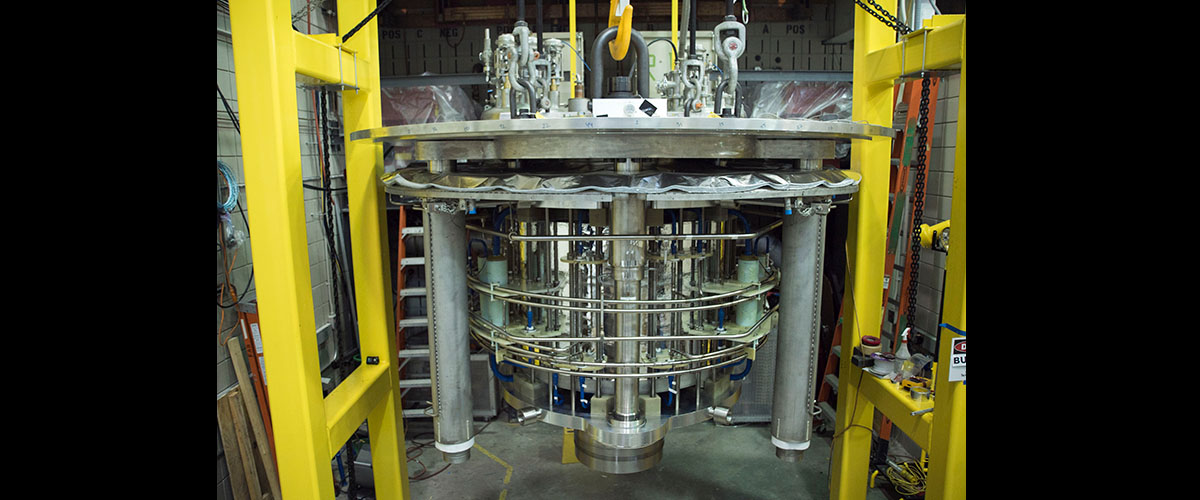
With record-breaking field homogeneity, this is the strongest magnet used for NMR in the world
As the name suggests, the Series Connected Hybrid (SCH) magnet is a combination of two magnets — a superconducting magnet, and a resistive magnet — connected in series, one after another. The hybrid magnet generates a field that is both incredibly high and very stable. It also creates a "high quality" field, meaning it is homogenous throughout the experimental space over time. This is a big deal for researchers looking to study molecular structures of proteins and other materials using nuclear magnetic resonance (NMR), which requires a very stable field.
But building an entirely new kind of magnet that would be used both as the world's strongest NMR instrument and also as one of the strongest magnets for condensed matter physics was no small feat.
Teams from both magnet disciplines had to join forces, as well as meet in the middle on magnet technologies. Members of the NMR group, who typically work on biochemical questions using superconducting magnets, teamed up with members of the DC Field Facility, who use the MagLab's high-powered, resistive magnets to conduct physics and materials science experiments. At times, it seemed like the two teams didn't even speak the same science language. While the NMR experts were familiar with self-sustaining superconducting magnets that (after an initial charge) require zero power to operate, staff from the DC Field Facility were used to pumping over 6.5 million kilowatthours of electricity through their magnets every month. But the resistive magnets create "noise" — irregular fluctuations in the current that obscure data on sensitive NMR experiments. This makes the field up to six orders of magnitude less homogenous than the fields of superconducting magnets. The two teams worked together on the "Frankenmagnet" putting in more than 120,000-person hours. After a decade of design and construction, the Series Connected Hybrid was successfully tested in November 2016. After about one year of commissioning, the SCH was opened for external user operation in January 2018.
At 36 tesla, the SCH boasts record-breaking field homogeneity, while being more cost- and energy-efficient than similar magnets. It is also now the strongest magnet used for NMR in the world, and is already opening doors for new discoveries in biology, chemistry and materials science. The SCH's high, stable field offers super-high data resolution, allowing researchers to observe more elements (including oxygen) and molecular structures, such as complex proteins, than ever before. There are even plans to configure the instrument in future years so that it can be used as an ultra-powerful MRI machine.
Learn more details or request time on the 36T/1.5GHz SCH for NMR or the 36T SCH for condensed matter physics.
| Strength | 36 tesla |
| Type | Resistive-superconducting hybrid (coils connected in series) |
| Bore size | 40mm |
| Online since | November 2016 |
| Cost | $18.7 million |
| Weight | 30,000 kg (33 tons) |
| Height | 3.6 meters (11.8 feet) |
| Operating temperature | -269 ° C (-452 ° F) |
| Power Needed to Operate | 14 Megawatts |
| Homogeneity | 1 part per million |
Last modified on 31 December 2022